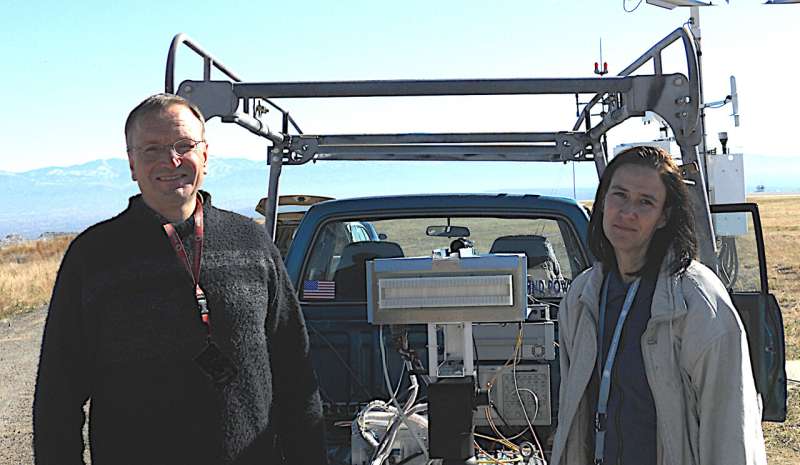Smaller, more versatile antenna could be a communications game-changer

As wireless communications technology continues to advance, the need for smaller, more versatile and energy- and cost-efficient antennas is becoming increasingly important. Now, scientists and engineers at Los Alamos National Laboratory have developed a new type of antenna, called LightSlinger, to meet this need.
"We have been developing LightSlingers at Los Alamos for more than 15 years," said John Singleton, condensed matter physicist and one of the two principal investigators on the project. "They were initially developed as fundamental science models for violent astronomical phenomena, but we soon realized that they were more efficient and considerably more flexible than conventional antennas of a similar size."
Added his colleague and co-investigator Andrea Schmidt, "Our hope is that LightSlingers will, in the near future, replace outdated base-station antenna technology around the globe and expedite the rollout of 4G."
Their small size, relatively light weight, power efficiency and resiliency against abusive treatment make them more versatile than equivalent conventional antennas. In addition, LightSlingers can be built in unusual shapes such as flat panels, cylinders or disks that are uniquely optimized to particular situations and applications. For example, they could form part of ceramic armor applied to a tank or unmanned ground vehicle.
LightSlingers use volume-distributed polarization currents, animated within a dielectric to faster-than-light speeds, to emit electromagnetic waves. (By contrast, traditional antennas employ surface currents of subluminally moving massive particles on localized metallic elements such as dipoles.) Owing to the superluminal motion of the radiation source, LightSlingers are capable of "slinging" tightly focused wave packets with high precision toward a location of choice. This gives them potential advantages over phased arrays in secure communications such as 4G and 5G local networks as well as warfighter communications and radar applications.
Several prototypes of LightSlinger have been tested in lab environments and in the field over distances of up to 76 km. Also, three of them were independently validated by a U.S. telecommunications company. Los Alamos is now looking to transition the antennas to commercial prototypes that can be field tested and mass-produced by additive manufacturing and robotic processing.


















